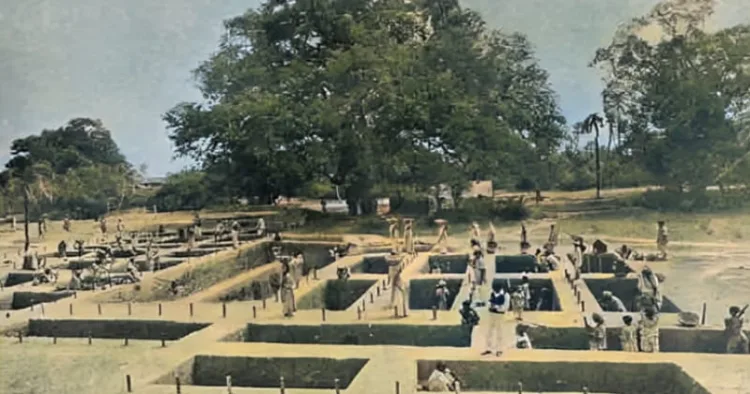On December 1, the Archaeological Survey of India began uncovering part of the ’80-pillared assembly hall’ at Kumhrar, a site considered the sole evidence of the architectural endeavours of the Mauryan emperors in the Indian subcontinent.
The process of uncovering some of the buried pillars of what is believed to be the remains of the Mauryan palace in Pataliputra began under the leadership of ASI Director General Yadubir Singh Rawat. ASI Patna Circle Superintending Archaeologist Sujeet Nayan, along with other senior officials, was also present at the site.
A statement issued by the ASI stated, “The process of uncovering some of the buried Mauryan stone pillars of the Asokan Sabha Ghar was initiated by the DG at the Kumrahar protected site in the state capital on December 1.”
The process has been initiated to assess the current condition of the pillars, with the possibility of uncovering all 80 pillars following a detailed scientific analysis. According to the statement, this analysis will include measuring the current water table in collaboration with scientists from the Central Ground Water Board.
Experts believe that this hall was where Emperor Ashoka held his meetings. However, in the late 1990s, the ruins began to suffer waterlogging due to groundwater seepage. To prevent further damage to the excavated structure, the site was covered with soil and sand in 2004. Sujeet Nayan said, “Initially, only a few pillars will be uncovered. After a thorough assessment of their condition, more pillars may be revealed to the public. Today marks a historic moment, as the process of uncovering the pillars has begun after 20 years.”
The archaeologist said that the Mauryan period hall was revealed through excavations carried out by the ASI and the K P Jayaswal Research Institute, Patna, between 1912 and 1915 and again between 1951 and 1955. He said, “This hall is believed to have been used by Ashoka for the Third Buddhist Council, which was held in Pataliputra in the 3rd century BCE.”
Due to waterlogging caused by groundwater seepage in the late 20th century, the site was once again covered with soil and sand in 2004 to prevent further damage.
Kumhrar is an area in Patna where the remains of the ancient city of Pataliputra, the capital of the Mauryan Empire, were uncovered. Archaeological finds here, dating back to 600 BCE, shed light on the history of the city and its rulers, including Ajatasattu, Chandragupta Maurya, and Ashoka. The site contains remnants from four distinct historical periods, ranging from 600 BCE to 600 CE.



















Comments